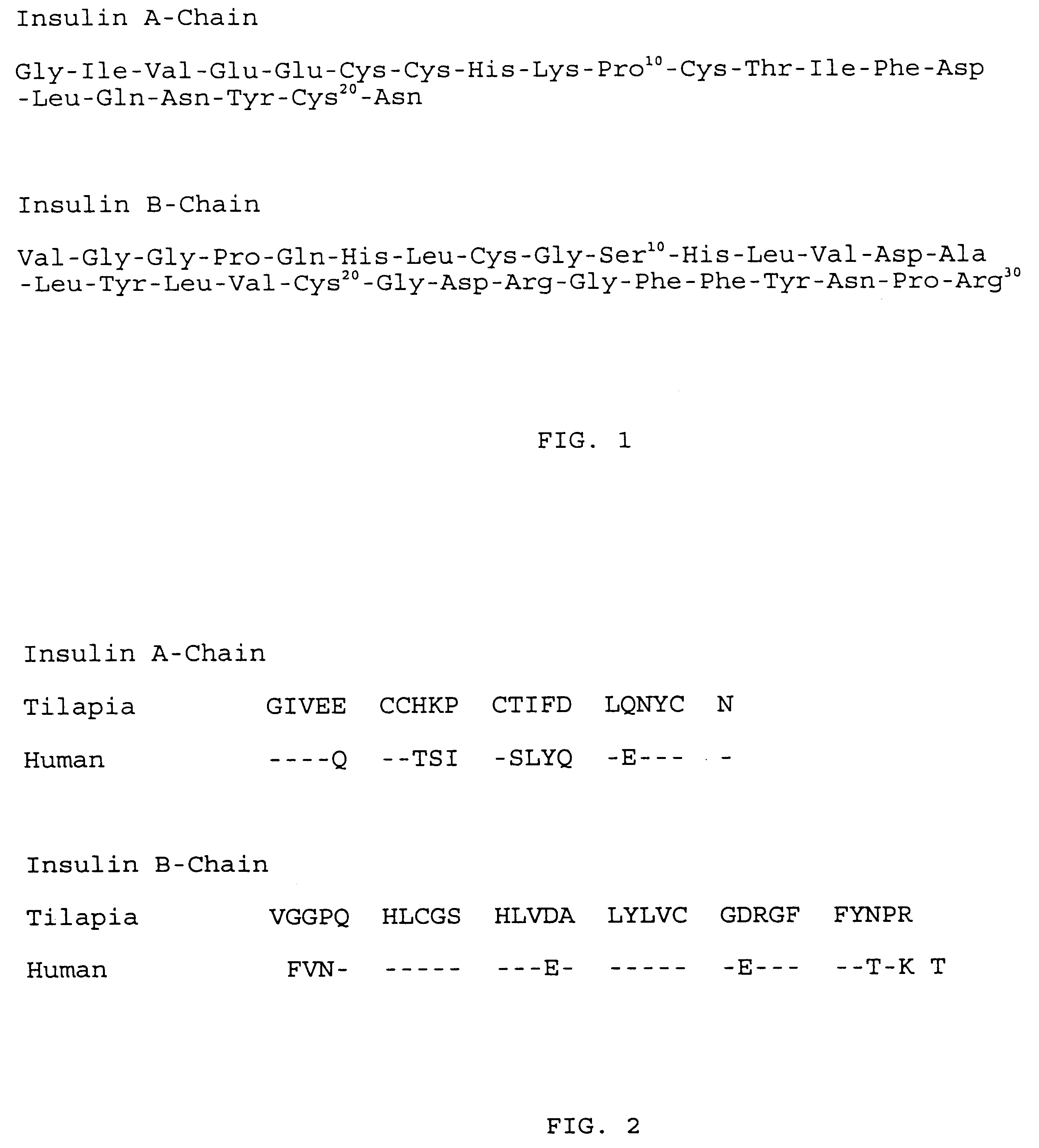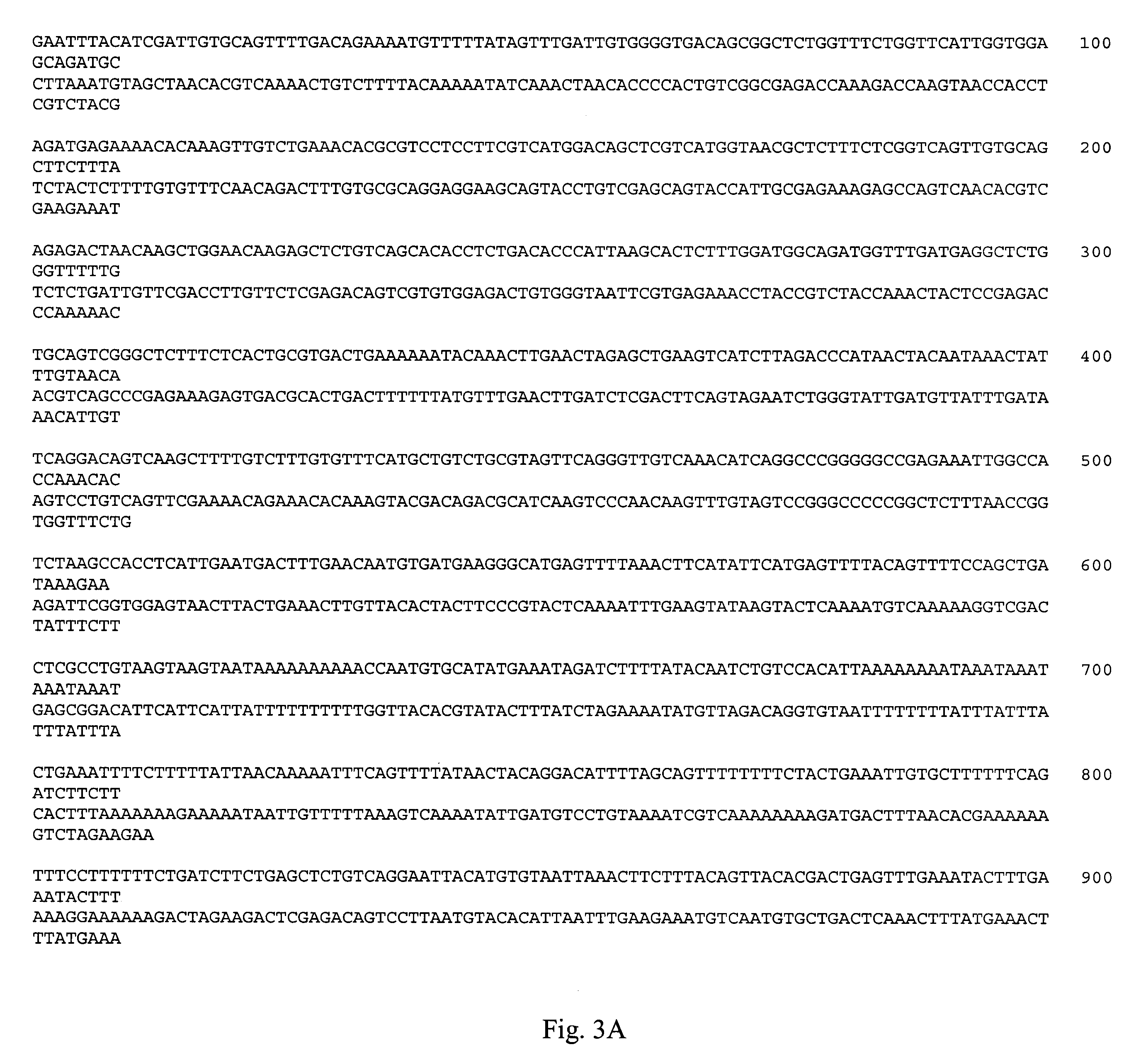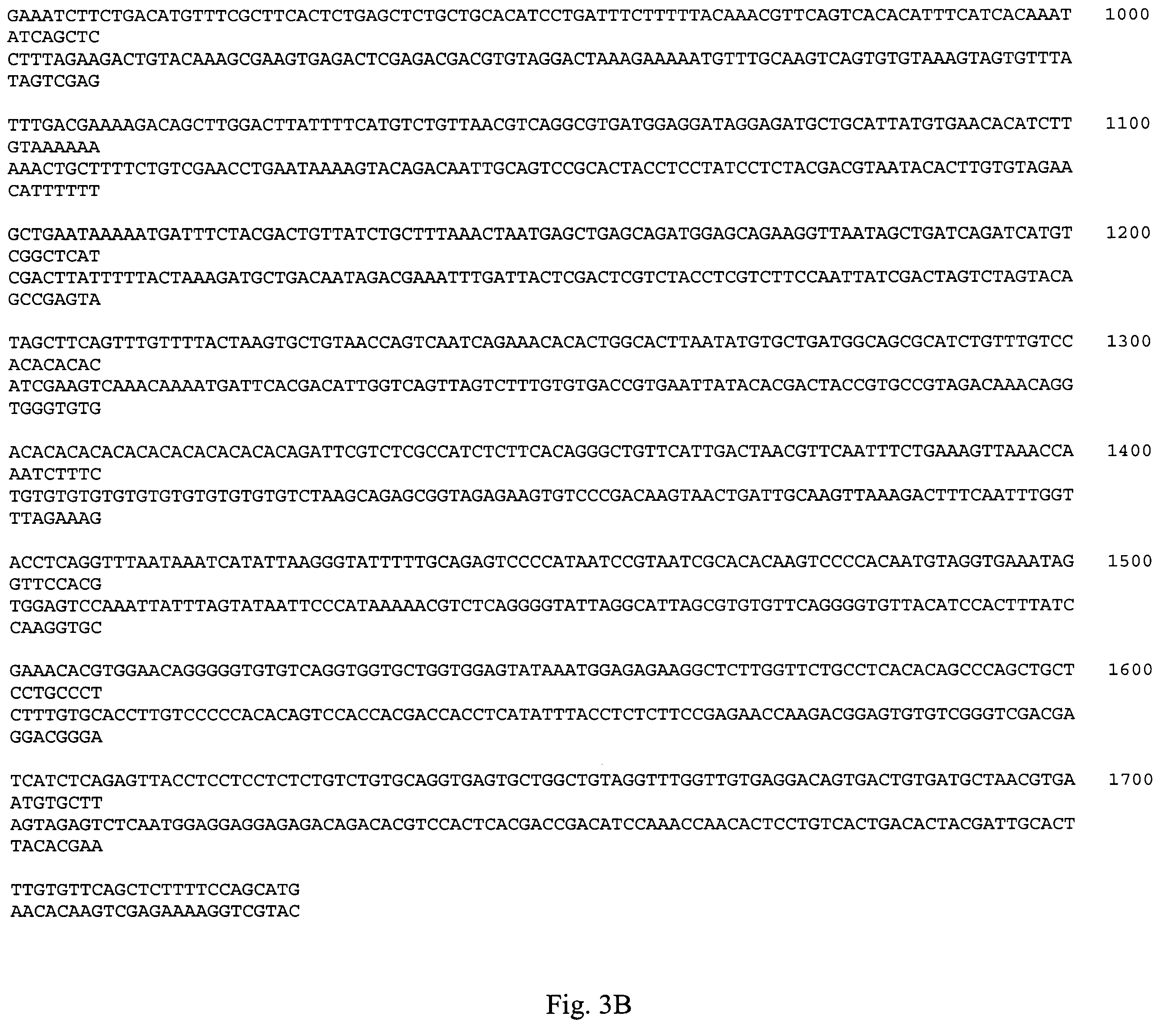Transgenic tilapia comprising a humanized insulin gene
a technology of humanized insulin and tilapia, which is applied in the field of genetic stability and production of transgenic tilapia, can solve the problems of insufficient human donor pancreases available to treat the vast number of type i diabetic patients, significant morbidity and mortality, and lack of human donor pancreases, etc., to achieve genetic and developmental stability and uniformity, stable integration of humanized insulin gene, and good growth and survival characteristics
- Summary
- Abstract
- Description
- Claims
- Application Information
AI Technical Summary
Benefits of technology
Problems solved by technology
Method used
Image
Examples
example 2
Preparation of Humanized Insulin Gene
Tilapia insulin has been purified and sequenced (Nguyen T M, Wright J R Jr, Nielson P F, and Conlon J M: Characterization of the pancreatic hormones from the Brockmann body of the tilapia-implications for islet xenograft studies. Comp. Biochem. and Physiol. 111C:33-44, 1995) (FIG. 1). Tilapia insulin differs from human insulin by nine amino acids in the A-chain and eight amino-acids in the B-chain (FIG. 2).
Using an in vitro polymerase chain reaction (PCR) cloning strategy (Takara Shuzo Co. LTD) and nested degenerate primers based on conserved amino acids from human and several teleost fish insulins (Hobart P M, Shen L-P, Crawford R. Pictet R L and Ruttner W J: Comparision of the nucleic acid sequence of anglerfish and mammalian insulin mRNA's from cloned CDNA's. Science 210:1360-3, 1980; Chan S J, Cao Q-P, Nagamatsu S, and Steiner D F: Insulin and insulin-like growth factor genes in fishes and other primitive chordates. In: Biochemistry and molec...
example 3
Testing Expression of the Humanized Tilapia Insulin Gene
As described above, using site-directed mutagenesis and linker substitutions the tilapia insulin gene was "humanized". In so doing, 9 codons in the A chain were changed, as where 8 codons in the B chain. The substituted codons were devised so that they code for the human insulin chains using tilapia preferred codons. Neither the tilapia pre-insulin leader nor the C chain was altered. This construct therefor maintains all the similar recognition sites for the endopeptidases and, thus, transgenic fish should process this modified protein in the same way as they process native insulin.
Two versions of the humanized tilapia gene have been constructed. The first construct lacks the human terminal threonine on the B chain (like tilapia). This should facilitate proper cleavage of the B-C chain. The second construct contains the terminal B chain threonine. In other fish (Salmon, Carp and Anglerfish) the B chain carboxy terminal amino ac...
example 4
Tilapia Insulin Promoter Analysis
As described above, the tilapia insulin gene includes approximately 1.8 Kb of 5' DNA which contains the complete insulin promoter. To test the sufficiency of this DNA to control expression, this region is ligated to a functional "reporter" gene such as beta-galactosidase, chloroamphenicol acetyl transferase (CAT), green fluorescent protein (GFP), or the like. This reporter DNA / insulin promoter construct is transfected into various cell lines (e.g., CHO, WEBHI3, and Rin cell lines). The Rin cell lines are a rat islet beta cell line and are used to determine if the tilapia insulin promoter is specific for beta cells. There are two variants of the rat Rin cells (Rin-M which secretes insulin, somatostatin, and Rin-14B which only secretes somatostatin). The functionality of the promoter is determined by transient transfection. Various DNA deletions are tested on this insulin promoter to determine which areas are required for optimal expression (including ...
PUM
 Login to View More
Login to View More Abstract
Description
Claims
Application Information
 Login to View More
Login to View More - R&D
- Intellectual Property
- Life Sciences
- Materials
- Tech Scout
- Unparalleled Data Quality
- Higher Quality Content
- 60% Fewer Hallucinations
Browse by: Latest US Patents, China's latest patents, Technical Efficacy Thesaurus, Application Domain, Technology Topic, Popular Technical Reports.
© 2025 PatSnap. All rights reserved.Legal|Privacy policy|Modern Slavery Act Transparency Statement|Sitemap|About US| Contact US: help@patsnap.com



